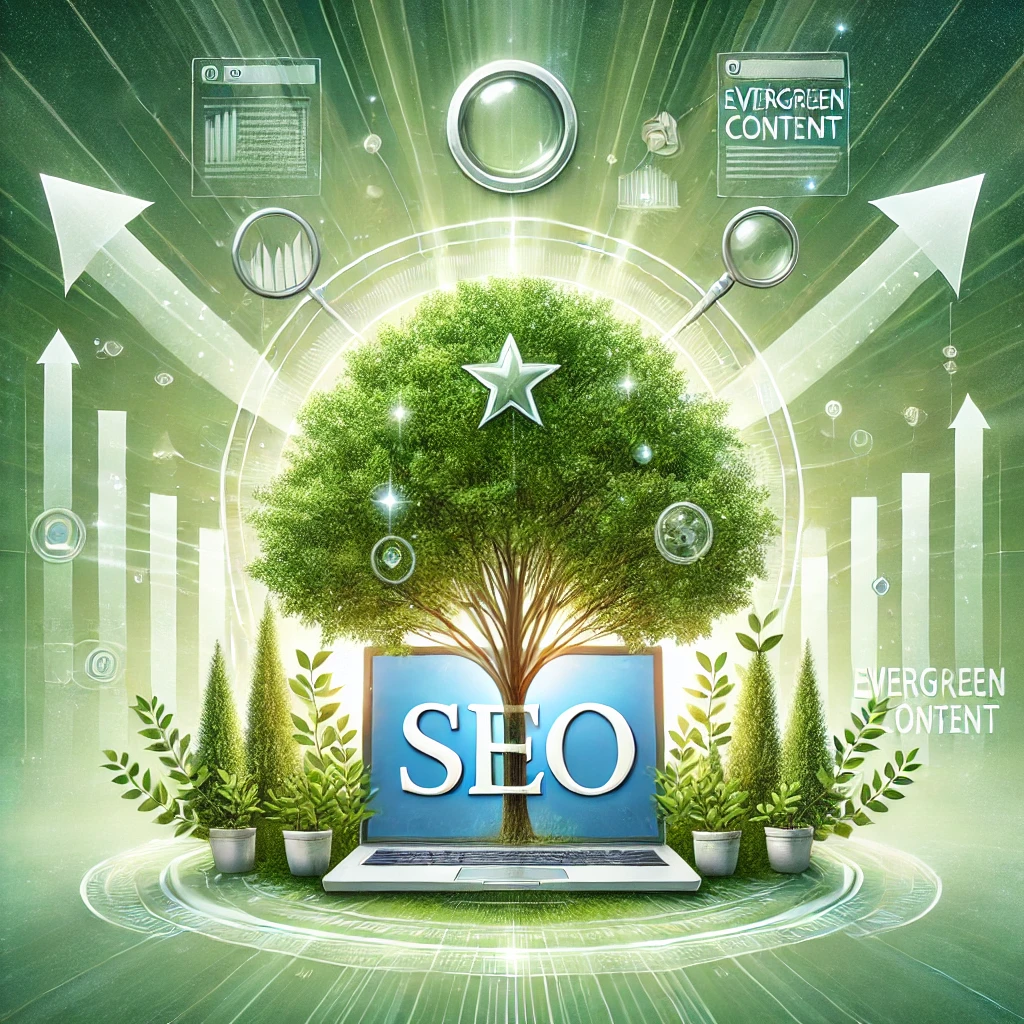How to Create Evergreen Content for Better SEO
Creating evergreen content is one of the best ways to boost your SEO and keep your website relevant over time. But what exactly is evergreen content, and how can you create it? Let’s explore this in simple terms.
What is Evergreen Content?
Evergreen content refers to articles, blogs, or any type of content that stays useful and relevant for a long time. Think of it like a tree that stays green throughout the year—no matter the season, it remains fresh. This type of content doesn’t rely on trends or current events but focuses on topics that people will continue searching for months or even years from now.

For example, an article about “How to Boil an Egg” is evergreen because people will always search for this information. On the other hand, a blog about the latest smartphone release is not evergreen because the information will soon become outdated.
Why is Evergreen Content Important for SEO?
- Long-Term Traffic: Since evergreen content stays relevant, it can keep bringing visitors to your site long after it’s published. This is great for long-term traffic.
- SEO Benefits: Google loves content that stays fresh and helpful. If your content is evergreen, it’s more likely to rank higher in search results, helping you get more organic visitors.
- Low Maintenance: Unlike trend-based content, evergreen content requires little to no updating. You don’t need to rewrite or refresh it frequently, saving you time in the long run.
How to Create Evergreen Content for SEO
Now that we know what evergreen content is, let’s learn how to create it.
1. Pick the Right Topic
The first step in creating evergreen content is choosing a topic that won’t go out of style. Here are some ideas:
- How-to Guides: People are always searching for how to do things. For example, “How to Save Money on Groceries” is a topic that will stay relevant.
- FAQs: Think of questions people always ask. For example, “What is SEO?” or “How to Start a Blog” are questions that will likely remain popular.
- Listicles: Lists like “10 Tips for Better Sleep” are timeless. People love easy-to-read lists and tips.
Always make sure that your topic is something people will be searching for years from now.
2. Use Simple and Clear Language
To make your content easy to read, use simple language. Avoid using jargon or technical terms that could confuse your readers. Your goal is to write content that anyone can understand, even beginners.
3. Do Keyword Research
To improve your SEO, make sure to include keywords that people are likely to search for. Use tools like Google Keyword Planner or free tools like Ubersuggest to find the best keywords related to your topic.
For example, if you’re writing about “How to Start a Garden,” you might want to use keywords like “beginner gardening tips” or “easy gardening ideas.”
4. Update When Necessary
Even though evergreen content lasts a long time, it’s still a good idea to update it when needed. Maybe new information becomes available, or you need to fix a broken link. Small updates can keep your content fresh in the eyes of Google.
5. Promote Your Content
Once you create your evergreen content, don’t forget to promote it! Share it on social media, include it in newsletters, and link it from other blog posts. The more people see it, the more traffic you’ll get.
Examples of Evergreen Content
- “How to Change a Tire”
- “Top 10 Budgeting Tips”
- “What is SEO and How Does it Work?”
These topics are not going out of style any time soon, making them perfect examples of evergreen content.
Final Thoughts
Creating evergreen content is a powerful way to improve your SEO and keep your website relevant. By choosing the right topics, using clear language, and focusing on long-term value, you can create content that stands the test of time.
Remember, evergreen content isn’t about being trendy—it’s about being timeless. So take your time, do your research, and create something that will continue to benefit your site for years to come.
